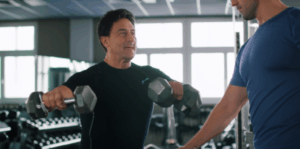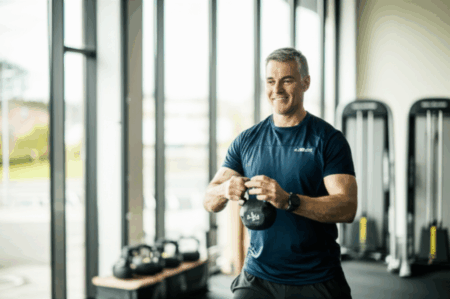In an era often dominated by the pursuit of more – more reps, more sets, more hours in the gym – a growing body of evidence and anecdotal success stories are championing a different philosophy: quality over quantity. For many fitness enthusiasts, including those who have personally experienced its advantages, focusing on the precision of movement, the intensity of effort, and the thoughtful execution of each exercise is yielding profound and sustainable benefits. This approach emphasizes mindfulness, proper form, and strategic progression, leading to enhanced results and reduced risk of injury.

The Paradigm Shift: Understanding Quality Over Quantity
The traditional view of exercise often equates longer workouts or higher volumes with better results. However, this perspective overlooks the crucial role of neuromuscular efficiency, muscular activation, and the body’s adaptive responses. Quality-focused training shifts the emphasis from simply “getting through” a workout to making every single repetition count.
What Does “Quality” Truly Mean in Exercise?
Quality in exercise encompasses several key elements:
- Immaculate Form: Executing exercises with perfect technique is paramount. Proper form ensures that the intended muscles are targeted effectively, minimizing the involvement of synergistic muscles that might compensate. It also drastically reduces the risk of strains, sprains, and chronic injuries.
- Mind-Muscle Connection: This involves consciously engaging the target muscle throughout the movement. By focusing on the contraction and extension of the muscle, you enhance neural activation, leading to more effective muscle growth and strength gains.
- Appropriate Intensity: Quality doesn’t necessarily mean lifting maximal weights all the time, but rather applying the right level of challenge for the desired adaptation. This could mean higher intensity with fewer repetitions for strength, or controlled, slower movements to maximize time under tension for hypertrophy.
- Strategic Progression: Rather than simply adding more volume, quality-focused training emphasizes intelligent progression – gradually increasing the load, resistance, or difficulty in a manner that maintains perfect form and control.

Unpacking the Benefits: Why Less Can Be More
Embracing a quality-over-quantity mindset in your exercise routine can unlock a multitude of benefits that extend beyond mere physical appearance.
Enhanced Muscle Activation and Growth
When you focus on quality, you ensure that the target muscles are truly working. This deep engagement leads to more efficient muscle fiber recruitment and greater stimulus for growth. For example, performing 10 perfect squats with a challenging weight will likely yield better results for leg strength and hypertrophy than 20 sloppy squats where other muscles compensate.
Superior Strength Gains
Quality training prioritizes lifting weights or performing movements that are challenging but allow for strict form. This consistent application of progressive overload with good technique is fundamental for building absolute strength. Over time, your body adapts more effectively to precise, demanding stimuli.
Reduced Risk of Injury
One of the most significant advantages of prioritizing quality is the substantial reduction in injury risk. Poor form, fatigue from excessive volume, and ego-lifting are common culprits behind gym-related injuries. By performing movements correctly and stopping before form breaks down, you protect your joints, ligaments, and tendons. This allows for more consistent training over the long term, preventing setbacks.
Improved Neuromuscular Efficiency
The brain and muscles communicate through neural pathways. Quality training hones this communication. By focusing on the mind-muscle connection and precise movements, you improve your body’s ability to activate muscle fibers more effectively and coordinate movements more smoothly. This translates to better athletic performance in general.
Greater Time Efficiency
For those with busy schedules, a quality-focused routine is a game-changer. Shorter, more intense, and highly effective workouts mean less time spent in the gym, freeing up time for other commitments. This efficiency can also make adhering to a routine more sustainable in the long run.
Enhanced Body Awareness and Control
Paying close attention to form and muscle engagement fosters a deeper understanding of your own body mechanics. This increased proprioception (awareness of your body in space) and kinesthetic awareness (awareness of your body’s movement) can benefit daily life, sports performance, and injury prevention.
Mental Discipline and Focus
Quality training demands mental presence. It requires concentration, patience, and discipline to resist the urge to rush or compromise form. This mental fortitude cultivated in the gym can positively impact other areas of life.

Implementing a Quality-Focused Routine
Transitioning to a quality-over-quantity mindset involves a few practical shifts in your approach:
- Prioritize Form First: Always choose a weight or resistance that allows you to maintain perfect form throughout the entire range of motion. If your form breaks down, reduce the weight.
- Slow Down: Resist the urge to rush through repetitions. Control both the concentric (lifting) and eccentric (lowering) phases of the movement.
- Engage Your Muscles Consciously: Before starting a set, mentally “feel” the muscle you intend to work. During the exercise, actively squeeze and contract that muscle.
- Track Your Progress Intelligently: Instead of just logging sets and reps, note down the weight, reps, and how the movement felt. Focus on gradual increases in weight or improvements in form over time.
- Listen to Your Body: Pay attention to signals of fatigue or discomfort. Rest when needed, and don’t push through pain.
- Consider Professional Guidance: Working with a qualified trainer can provide invaluable feedback on your form and help you design a quality-focused program tailored to your goals.
In conclusion, while the allure of high volume might persist, the tangible benefits of a quality-centric exercise routine are becoming increasingly clear. By focusing on precision, intensity, and mindful execution, individuals can achieve superior physical adaptations, minimize risk, and cultivate a more sustainable and rewarding fitness journey.







